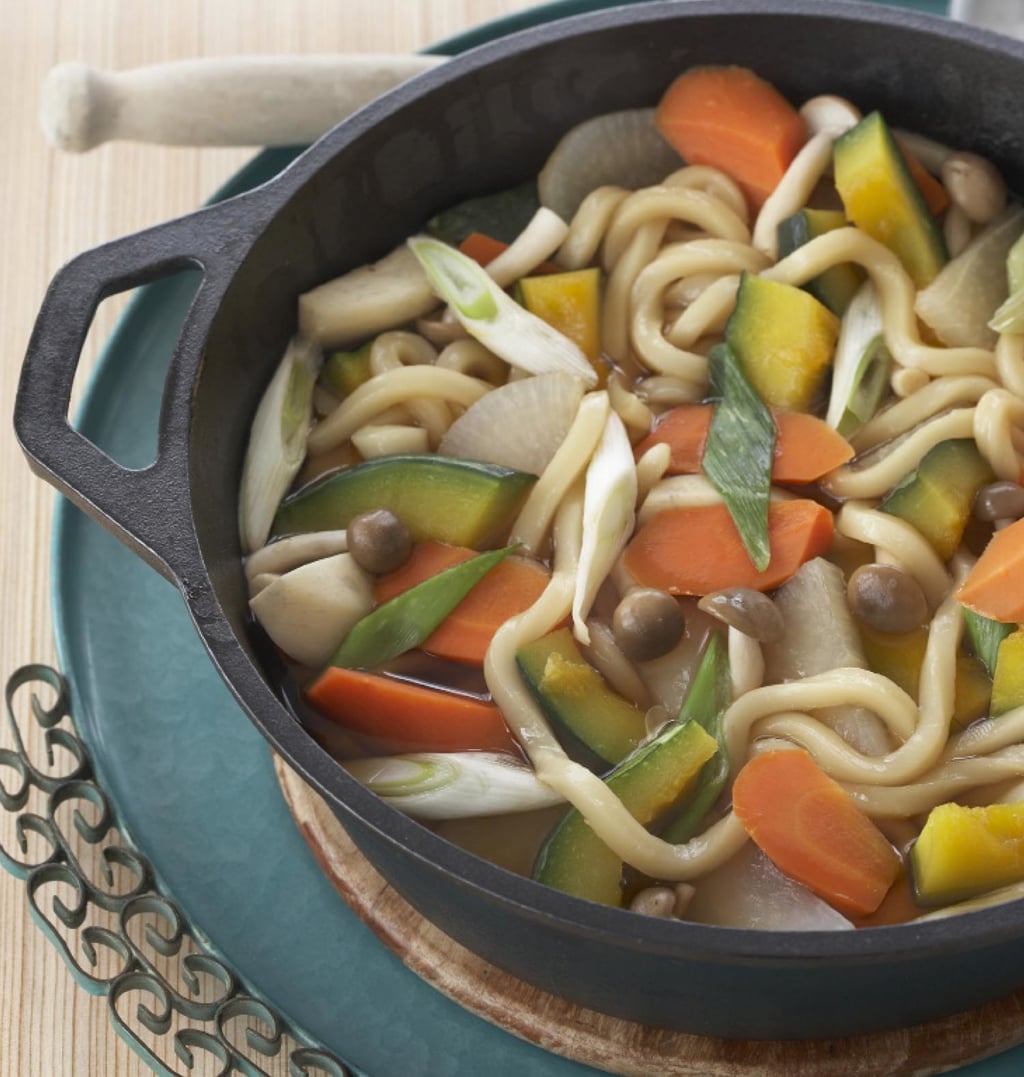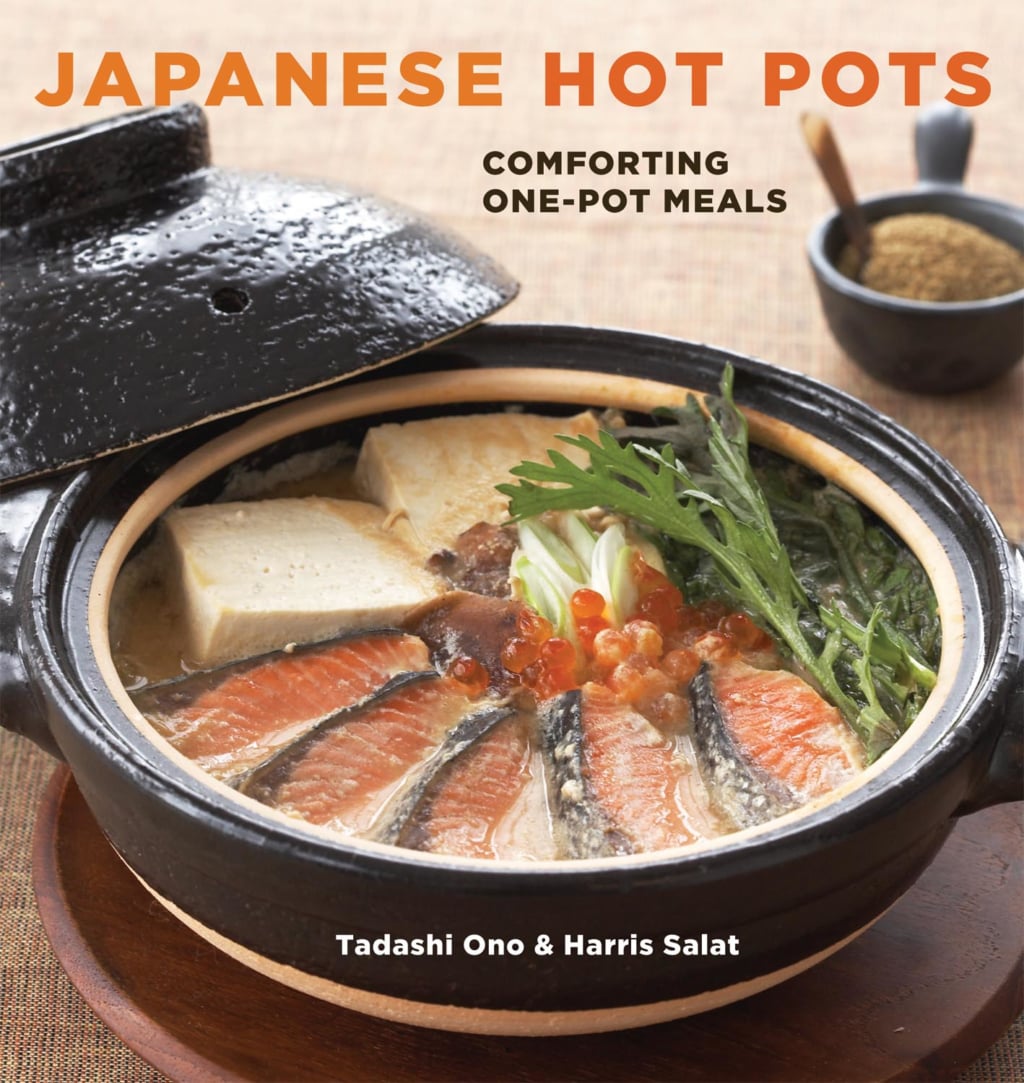Tadashi Ono and Harris Salat’s Tofu Hot Pot
They share the recipe for this dish that's typical of the monastic vegetarian cooking style known as ‘shojin ryori.’

Ten Speed Press
‘Kyoto, the former capital of Japan, is the birthplace of shojin ryori, the traditional vegetarian Buddhist cuisine consumed in the city’s many temples. Tofu is a pillar of this cuisine and, to this day, artisanal manufacturers in Kyoto make it every morning before dawn. Tofu stew is a classic dish in this city, especially in winter’, reads the introduction to this hot pot recipe, taken from the book Japanese Hot Pots, co-written by culinary journalist Harris Salat and Japanese chef and author Tadashi Ono.
The duo share a recipe put together especially for vegetarians, who will discover how to replace dashi, which contains fish, with a non-meat version, to respect the precepts of shojin ryori as far as possible.
Japanese Hot Pots showcases salty broths and ingredients that are both healthy and easy to find all over the world, like seafood, poultry, green vegetables, roots, mushrooms, and noodles. Cooked using classic utensils, they require very little preparation and no special equipment.
Harris Salat and Tadashi Ono have also written other cookbooks together, like Japanese Soul Cooking and The Japanese Grill.
Serves 4
Ingredients
For the warijoyu sauce
125 ml soy sauce
62.5 ml dashi
2 tablespoons mirin
—
2 pieces kombu (around 15 cm)
2 packs silken tofu, each cut into 6 blocks (packs of around 450 g)
120 g shiitake mushrooms (around 8 pieces), stems removed and caps cut in half
1 negi cut diagonally, in 5-cm pieces
120 g napa cabbage, sliced
2 l water
Shichimi togarashi, to season
120 g shibori scallions, to garnish
Method
To make the warijoyu sauce, combine the soy sauce, dashi, and mirin in a small saucepan and bring to the boil over a high heat. Remove from the heat and let cool to room temperature.
Place the kombu in the bottom of a saucepan and then carefully place the tofu on top, in the centre. Arrange the shiitake mushrooms, the negi, and the cabbage around the tofu. Add the 2 litres of water.
Cover the saucepan and bring to the boil over a medium heat. Reduce heat to low, remove the lid, and leave to simmer until the tofu is warmed through, for around 10 minutes. Monitor at regular intervals to make sure that the liquid doesn’t simmer too much, to avoid breaking the tofu.
Transfer the hot pot to the table. Serve the ingredients (without the stock) in small bowls, drizzle with warijoyu, and season with shichimi togarashi. Garnish with the scallions. Add more warijoyu if desired.
Suggested shime (accompanying dish): Zosui (rice soup). Add the remaining warijoyu and shibori scallions to the rice.
Japanese Hot Pots (2009) by Harris Salat and Tadashi Ono is published by Ten Speed Press.

Ten Speed Press
TRENDING
-
A House from the Taisho Era Reveals Its Secrets
While visiting an abandoned building, Hamish Campbell discovered photographs the owner had taken of the place in the 1920s.

-
The Taboo-Breaking Erotica of Toshio Saeki
The master of the 1970s Japanese avant-garde reimagined his most iconic artworks for a limited box set with silkscreen artist Fumie Taniyama.

-
With Meisa Fujishiro, Tokyo's Nudes Stand Tall
In the series 'Sketches of Tokyo', the photographer revisits the genre by bringing it face to face with the capital's architecture.

-
Masahisa Fukase's Family Portraits
In his series ‘Family’, the photographer compiles surprising photos in which he questions death, the inescapable.

-
Hajime Sorayama's Futuristic Eroticism
The illustrator is the pioneer for a form of hyperrealism that combines sensuality and technology and depicts sexualised robots.





